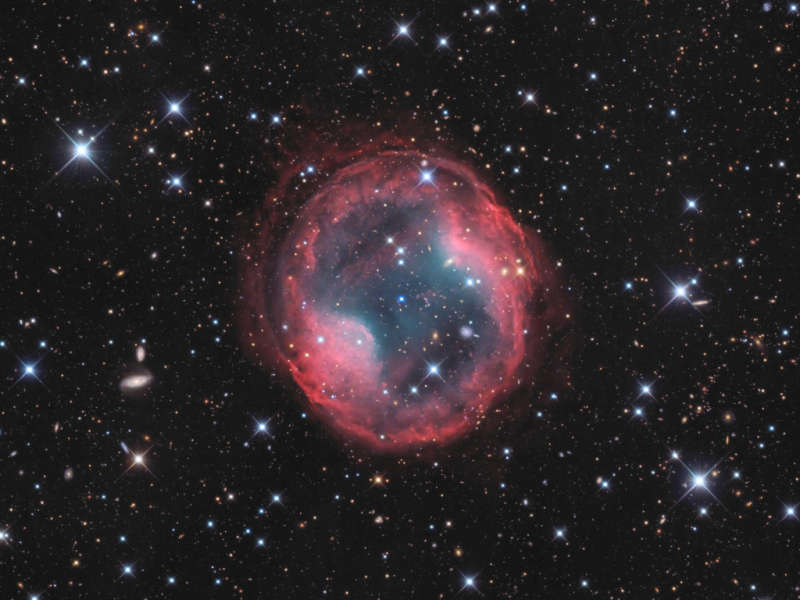Credit & Copyright: Serge
Brunier, Jean-Franцois Bax, David Vernet,
C2PU/OCA
Explanation:
Planetary nebula
Jones-Emberson 1
is the
death shroud
of a dying Sun-like star.
It lies some 1,600 light-years from Earth toward the
sharp-eyed
constellation Lynx.
About 4 light-years across,
the expanding remnant of the dying star's atmosphere was
shrugged
off
into interstellar space, as the star's
central supply of hydrogen and then helium for fusion was
finally depleted after billions of years.
Visible near the center of the planetary nebula
is what remains of the stellar core, a blue-hot
white dwarf
star.
Also known as PK 164 +31.1, the nebula is faint and very
difficult to glimpse at a telescope's eyepiece.
But this deep broadband image
combining 22 hours of exposure time does show it off in exceptional detail.
Stars within our own Milky Way galaxy as well as background galaxies
across the universe are scattered through the clear field of view.
Ephemeral
on the cosmic stage, Jones-Emberson 1
will fade away over the next few thousand years.
Its hot, central white dwarf star will take
billions
of years to cool.
1999 2000 2001 2002 2003 2004 2005 2006 2007 2008 2009 2010 2011 2012 2013 2014 2015 2016 2017 2018 2019 2020 2021 2022 2023 2024 2025 |
Январь Февраль Март Апрель Май Июнь Июль Август Сентябрь Октябрь Ноябрь Декабрь |
NASA Web Site Statements, Warnings, and Disclaimers
NASA Official: Jay Norris. Specific rights apply.
A service of: LHEA at NASA / GSFC
& Michigan Tech. U.
|
Публикации с ключевыми словами:
planetary nebula - Планетарная туманность
Публикации со словами: planetary nebula - Планетарная туманность | |
См. также:
Все публикации на ту же тему >> | |
